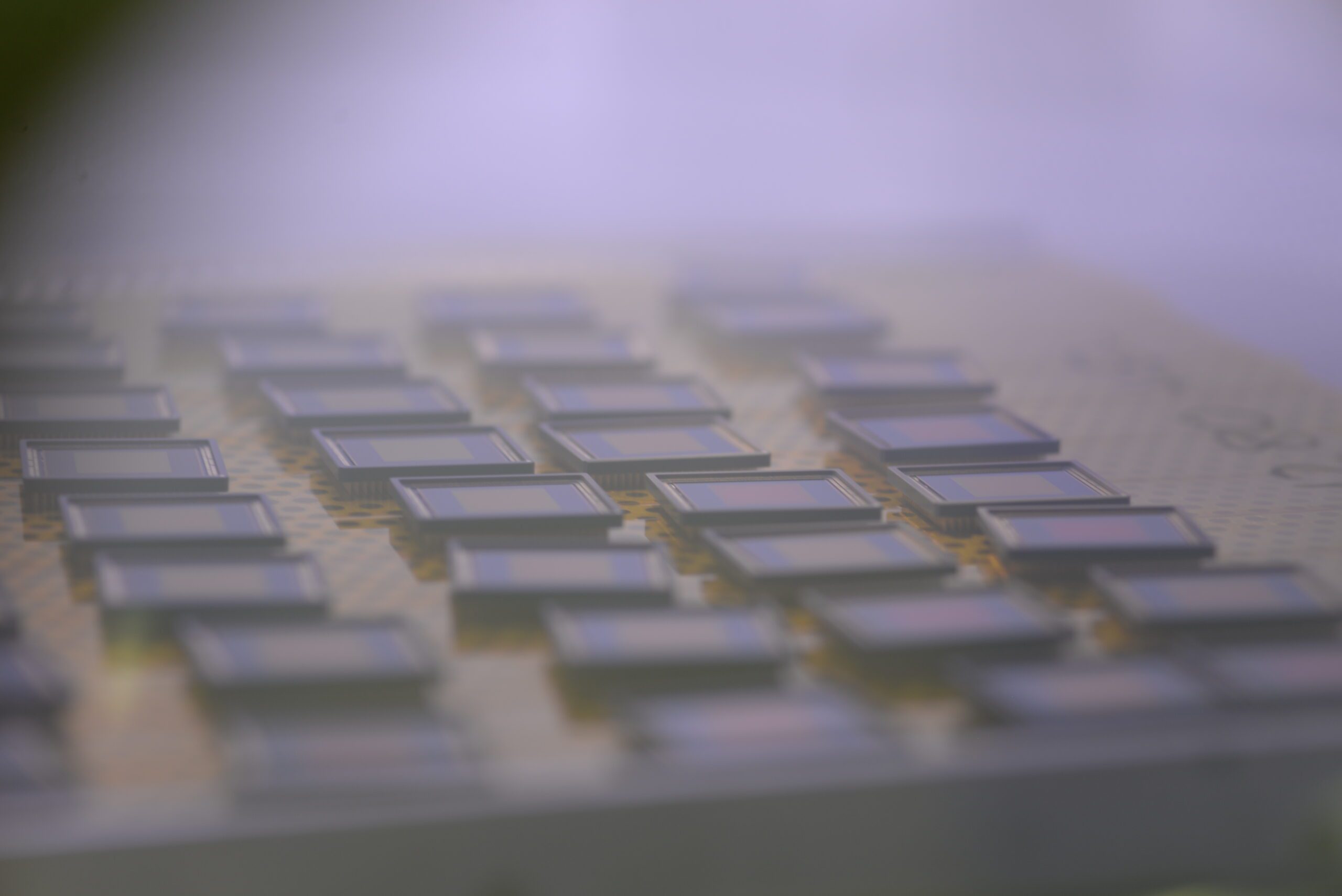Plasma-chemical cleaning
Plasma-chemical cleaning is one of the established technologies used for cleaning and modifying surfaces in the semiconductor industry. Depending on the technology used for the plasma generation, the cleaning is either mainly physical, i.e. the surface is bombarded with high kinetic energy ions, or chemical, i.e. volatile compounds are formed between ions and radicals from the process gas and impurities on the surfaces.
After the plasma cleaning, the substrate or component surfaces have a defined state. Therefore, the quality of the wire bonds on cleaned substrates and chips does not depend on the storage time of the previously assembled components, for example. Buring of adhesives, for example, generates consistend contamination by adhesive outgassing. Its influence on the following processes can have a negative impact, e.g. in case of gold wire bonding. This contamination can be removed by plasma cleaning. This method provides a good basis for a robust assembly and bonding process.
At Altatec we use gentle, plasma-chemical cleaning. A hot cathode source and argon, as the carrier gas, are used to generate a plasma current in the range of 40-60 Ampere at a plasma voltage of < 20V. The plasma-chemical cleaning itself is done through the chemical reactions of excited hydrogen molecules, ions and radicals with surface impurities, such as C, S, F, O and P. These volatile compounds are stable and can be pumped out of the chamber during the cleaning by a vacuum system. Due to the high plasma current, the density of the ionised hydrogen ions is very high. Hydrogen plasma cleaning is therefore incredibly effective. If hydrogen cannot be used as a process gas for material reasons, we can use an alternative process gas.
As opposed to plasma-physical cleaning, plasma-chemical cleaning has the additional advantage of only removing contamination from the surfaces. The substrate itself is not chemically stressed. In addition, cross-contamination is avoided thanks to the sputtering and redeposition of substrate materials. Another positive side effect of hydrogen plasma cleaning is the hydrogen passivation of the surfaces typically used in COB technology. Normally, a substrate processed in hydrogen plasma can be stored for longer periods of time before being processed further. Therefore, they do not need to be cleaned immediately before being assembled. Another advantage is that the surface that has been plasma-cleaned with hydrogen has excellent wetting properties for casting and adhesive bonding processes. In this case, we are talking about plasma activation and not necessarily about plasma cleaning. Surfaces that have been treated in this way have a far better adhesive quality than untreated surfaces.
You can find out more about plasma cleaning in this PDF:
Technical properties
- Cleaning with argon as a carrier gas and hydrogen or alternative process gases.
- Plasma source: DC hot cathode
- Gentle, plasma-chemical cleaning with low kinetic energy ions and low voltages
- Cleaning with slotted magazines possible. (suitable for mass production)
Specifications
Applications
- All types of substrates before adhesive is applied
- Integrated circuits, sensors, actuators, micro and large cameras before the wire bonding
- Metal surfaces or printed circuit boards before soldering
- Optical components, synthetics and metals before the adhesive is applied
- All types of assembled modules before encapsulating
